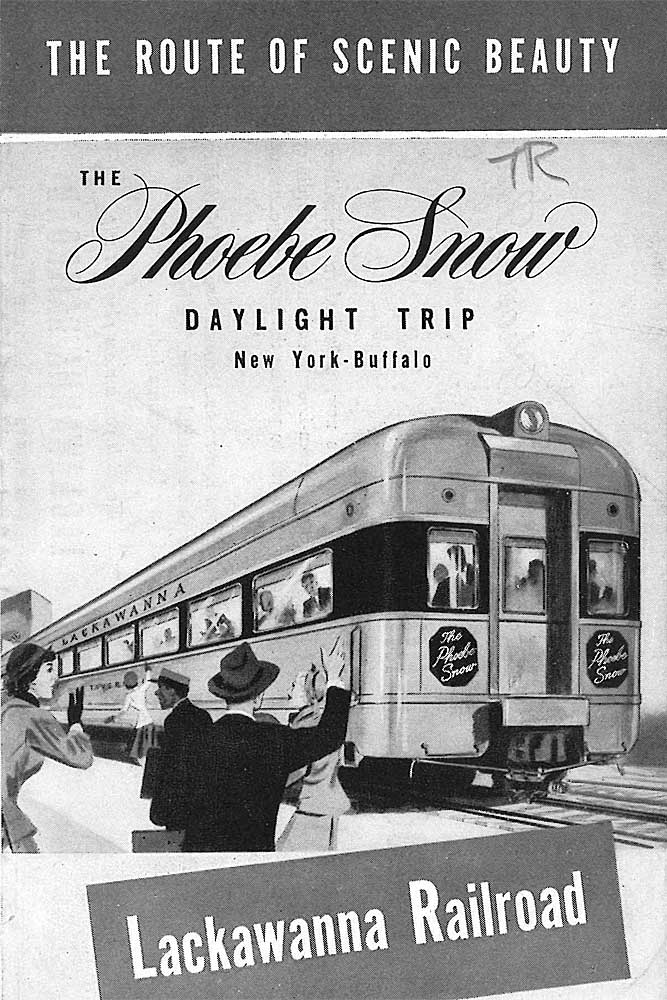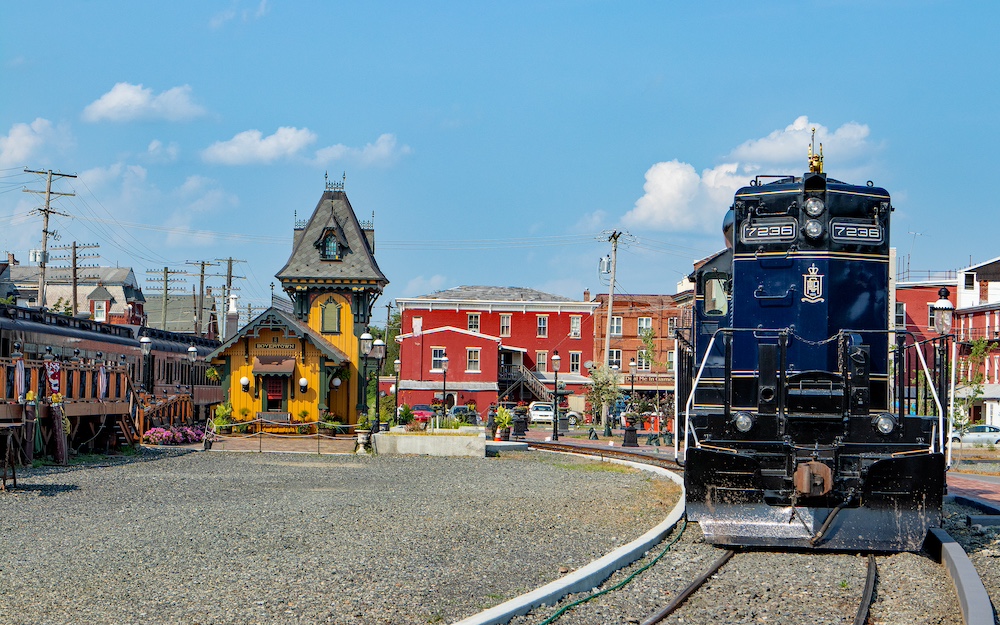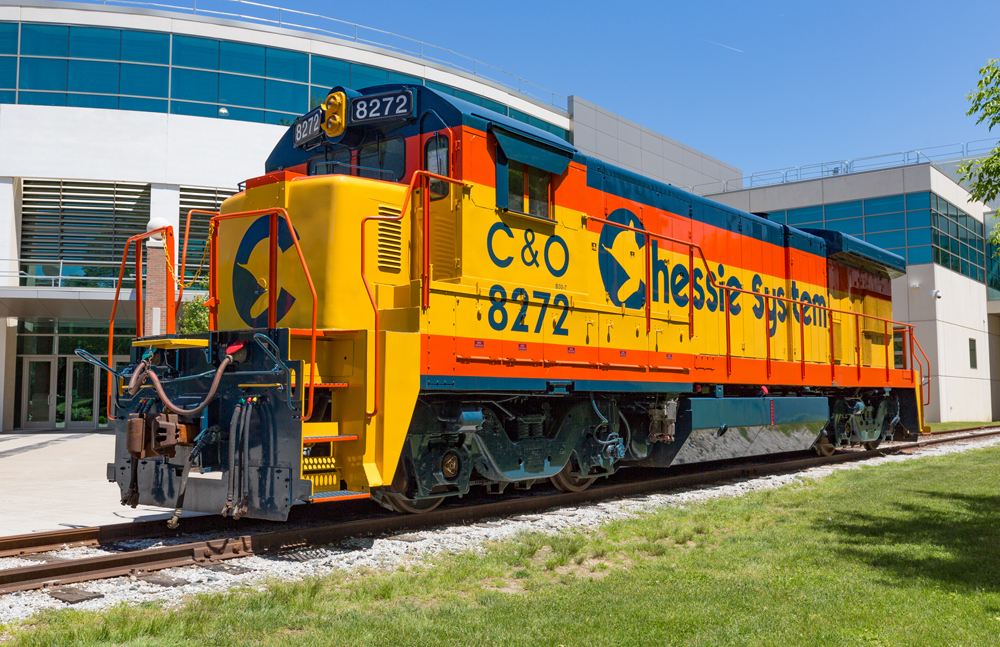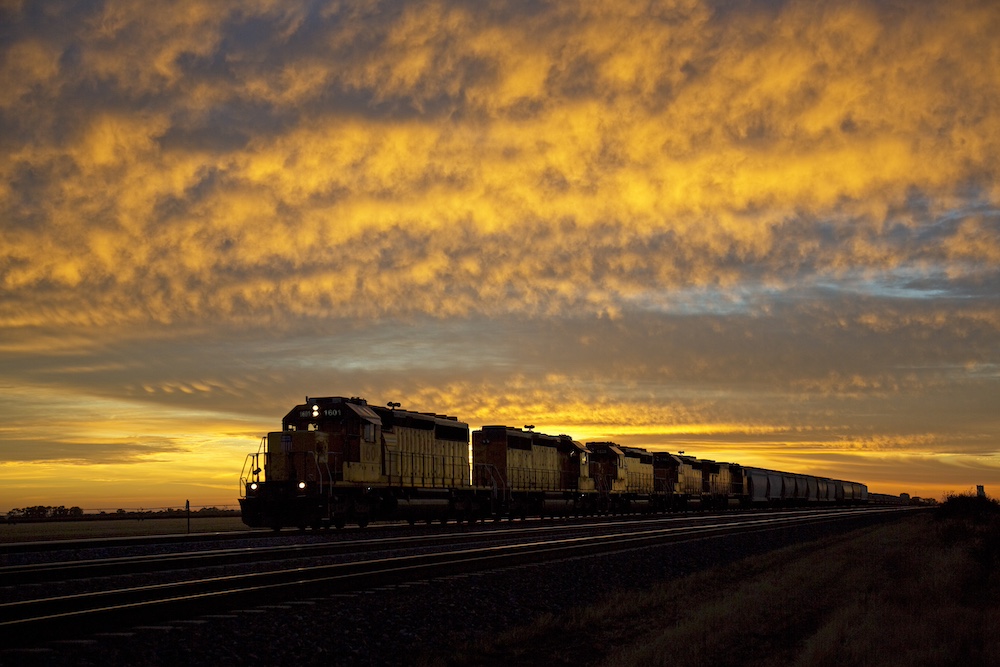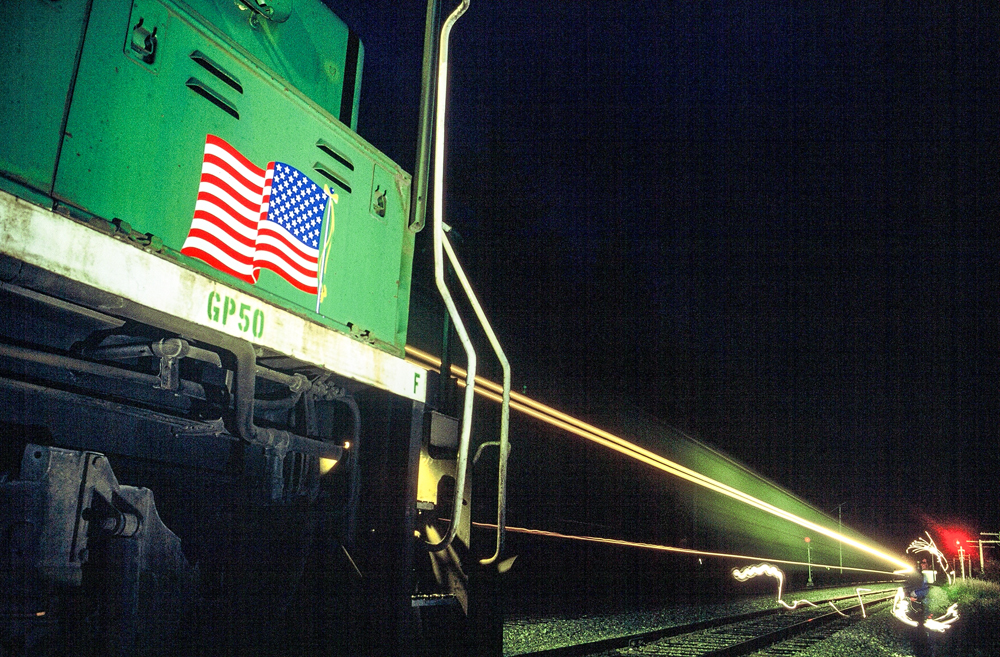Phoebe Snow as a person was an invention by advertising men a half century before the streamliner. A new management led by William Haynes Truesdale had taken charge of Lackawanna in 1899 and was turning the system from a 19th-century pike into a 20th-century railroad. The makeover included the passenger service. DL&W’s passenger engines used clean-burning anthracite, a hard coal that was a principal source of Lackawanna freight traffic.
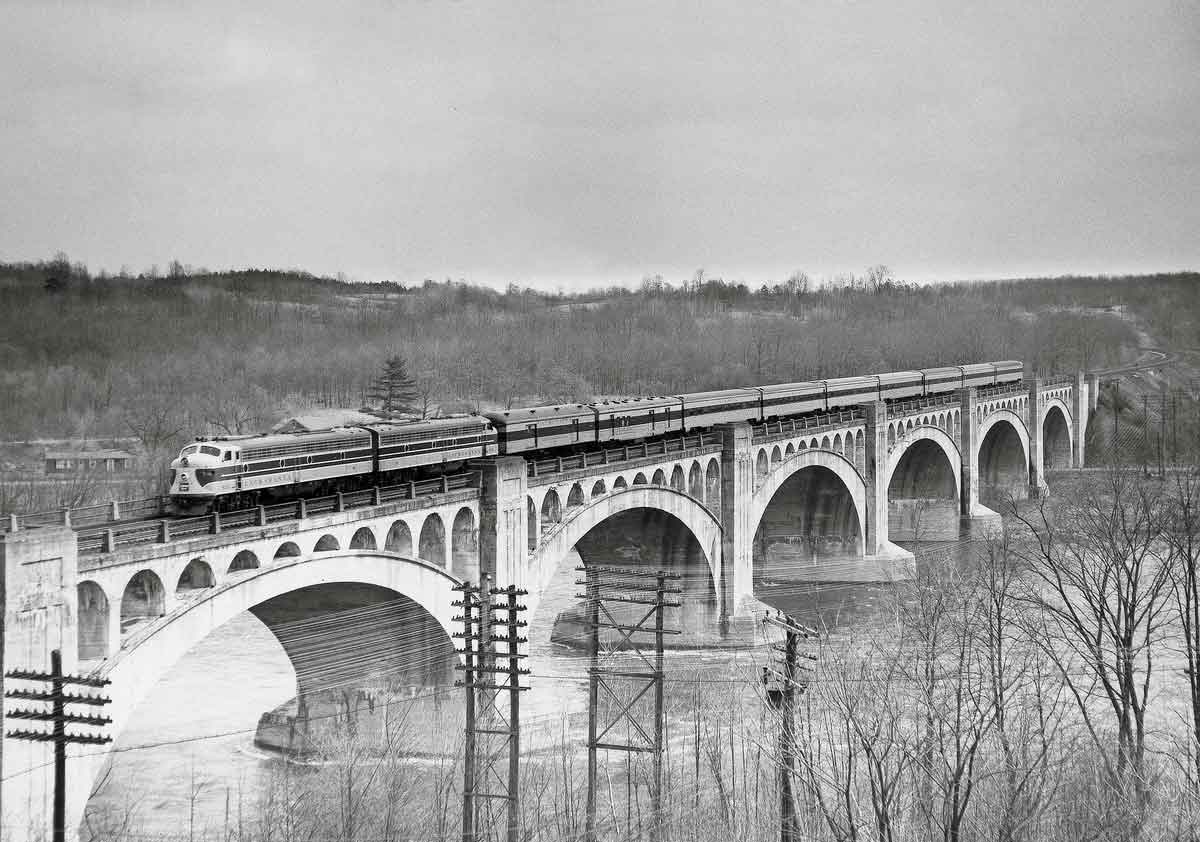
So, around 1900 DL&W adopted the image of a nameless young woman traveler whose likeness appeared on advertising cards along with verses based on the nursery rhyme “The House that Jack Built.” In the first such card, “She found to her surprised delight, hard coal had kept her dress still bright.” Two later cards, early examples of using sex in advertising, hinted that taking the Lackawanna was a great way for couples to meet. Ultimately the railroad’s maiden and some chap she encountered on a train fell in love and were married, “Because each looked so fresh and bright, On the dustless Road of Anthracite.” The marriage was soon forgotten, though.
Earnest Elmo Calkins, a New York advertising veteran and one of the first agents to help plan ad campaigns, wrote when in his mid-90s that it was he who, in 1903, had come up with the idea of naming the young woman Phoebe Snow. “Phoebe,” he said, “gave me two syllables for meter, while Snow suggested cleanness.” That led to more ad cards and 60 Phoebe Snow verses over the years, promoting DL&W’s passenger business and even its freight service. The image of Phoebe in a circle highlighted a logo before the familiar latter-day Lackawanna Railroad rectangle, and the railroad boasted of its “396-mile double-tracked steel boulevard as the shortest between New York City and Buffalo.”
The “real” in-the-flesh Miss Phoebe Snow was a New York model who posed for photos and made public appearances as the white-gowned, auburn-haired Phoebe. Contemporary accounts muddled her biography, but there seems no reason to doubt that Phoebe was Marion Edna Murray, née “Mamie” Hagenstein, born in New Haven, Conn., in 1882. She played two roles in the pioneer motion picture The Great Train Robbery, which was filmed on the Lackawanna’s Boonton Line. In 1907 she moved on to a stage career, and other models posed for the ad cards. When a portion of Lackawanna’s suburban electrification was dedicated in 1930, a Miss Antilly of Orange, N.J., appeared as Phoebe.
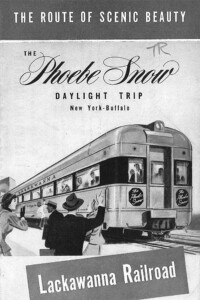
Phoebe Snow – the train
After that, Phoebe Snow was not much heard from until 1945, when the railroad’s manager of public relations, J. Hampton Baumgartner, announced a full-fledged revival of the Phoebe image. “The Route of Phoebe Snow” slogan began showing up on boxcars and in ads.
Then in 1949, Lackawanna’s new postwar Hoboken-Buffalo day train was named Phoebe Snow, replacing Lackawanna Limited, the name of its flagship for close to 50 years.
The Lackawanna merged with the Erie effective Oct. 17, 1960. With the change to Daylight Saving Time the following April, all through passenger trains took the Lackawanna route east of Binghamton, via Scranton, Pa., and were replaced by locals on the Erie side, via Port Jervis, N.Y. (Erie’s trains had already gradually vacated their Jersey City terminal in favor of Hoboken during 1956–58.)
Hoboken-Chicago trains 1 and 2 became the Erie-Lackawanna Limited, which was combined east of Elmira, N.Y., with the Phoebe Snow, now Nos. 31 and 32. The Phoebe was still a Hoboken-Buffalo train, in name, but her feature cars, the tavern-lounge-observations, were assigned to Hoboken-Binghamton trains 2 and 43, then reassigned to 1 and 2 between Hoboken and Salamanca, N.Y.
In October 1962 the Buffalo service was moved to the former Erie line between there and Hornell, N.Y., and the Phoebe name vanished. Reflecting the times, dining service to Buffalo was dropped, and Buffalo had only a small station out in the freight yard. The Phoebe tavern-lounges were put in storage.
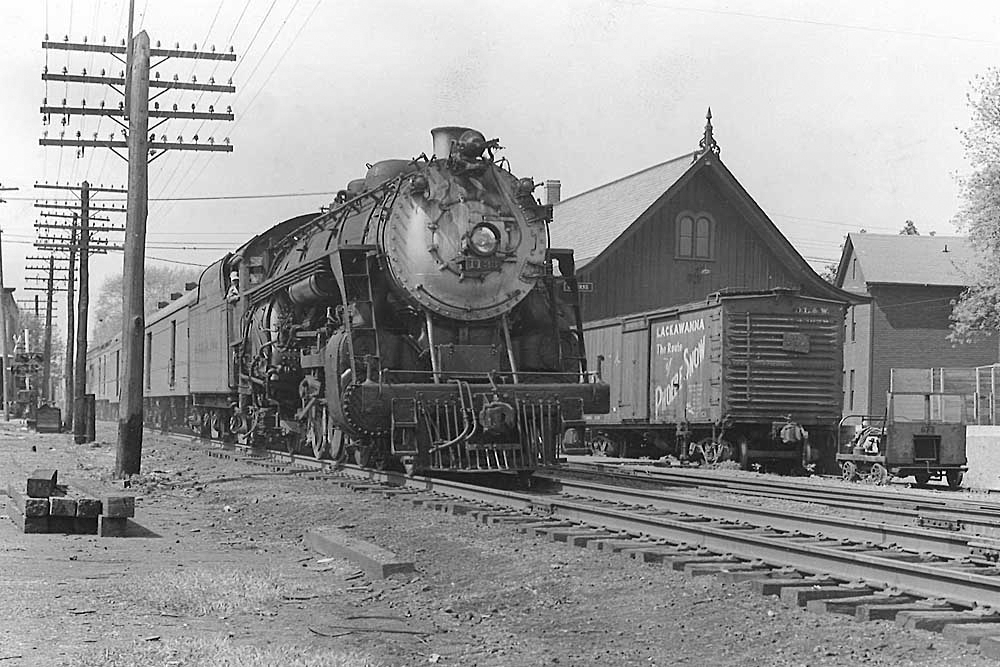
Reprieve for the Phoebe Snow
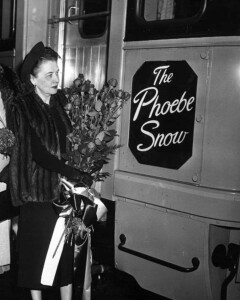
However, the tavern-lounges were brought out of storage and put back on the trains effective Aug. 1, 1963, amid a flurry of press and television stories that made frequent mention of the Phoebe name and legend. The cars, with their twin lighted tail signs that read “The Phoebe Snow,” were seen again on trains 1 and 2, in revenue service as far west as Meadville, Pa., and on to Youngstown, Ohio, for turning. With the next timetable, the Chicago trains became The Phoebe Snow.
Ridership continued to fall. In early 1966, EL sought to discontinue the Phoebe and the locals on the former Erie that met her at Binghamton. An Interstate Commerce Commission examiner held hearings in several cities and heard a lot of protests. For Scranton and such stops in upstate New York as Binghamton and Elmira, Phoebe was the last day train. The connecting locals, 21 and 22, offered the last service on the old Erie for stations between Binghamton and Port Jervis. Known to employees as “the Toonerville Trolley,” they often ran with only a coach and a baggage car.
On Nov. 6, 1966, the ICC approved the discontinuances, but EL decided to let them run through the Thanksgiving weekend. This ended the saga of the Phoebe Snow.
